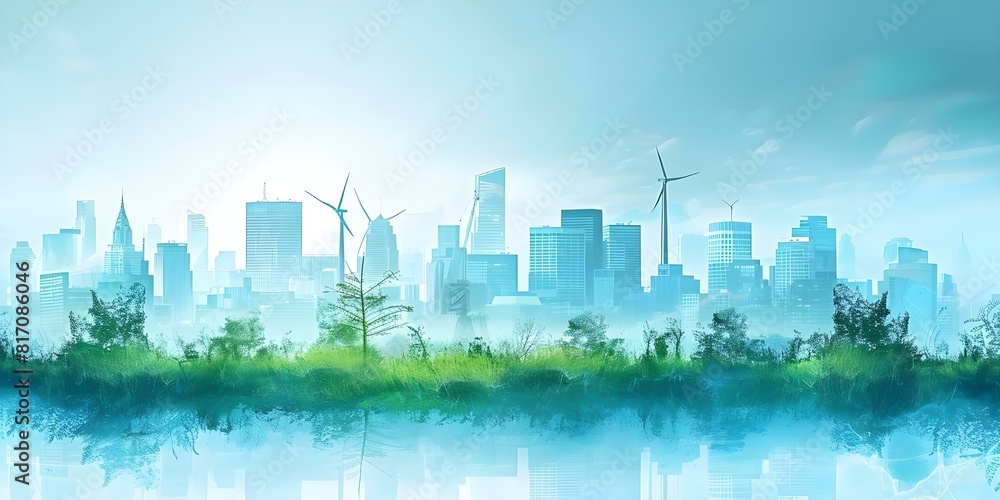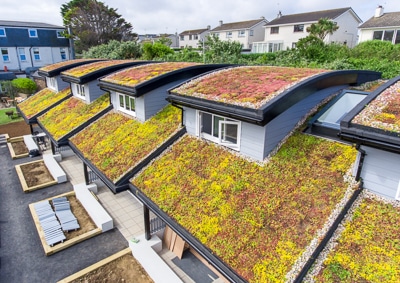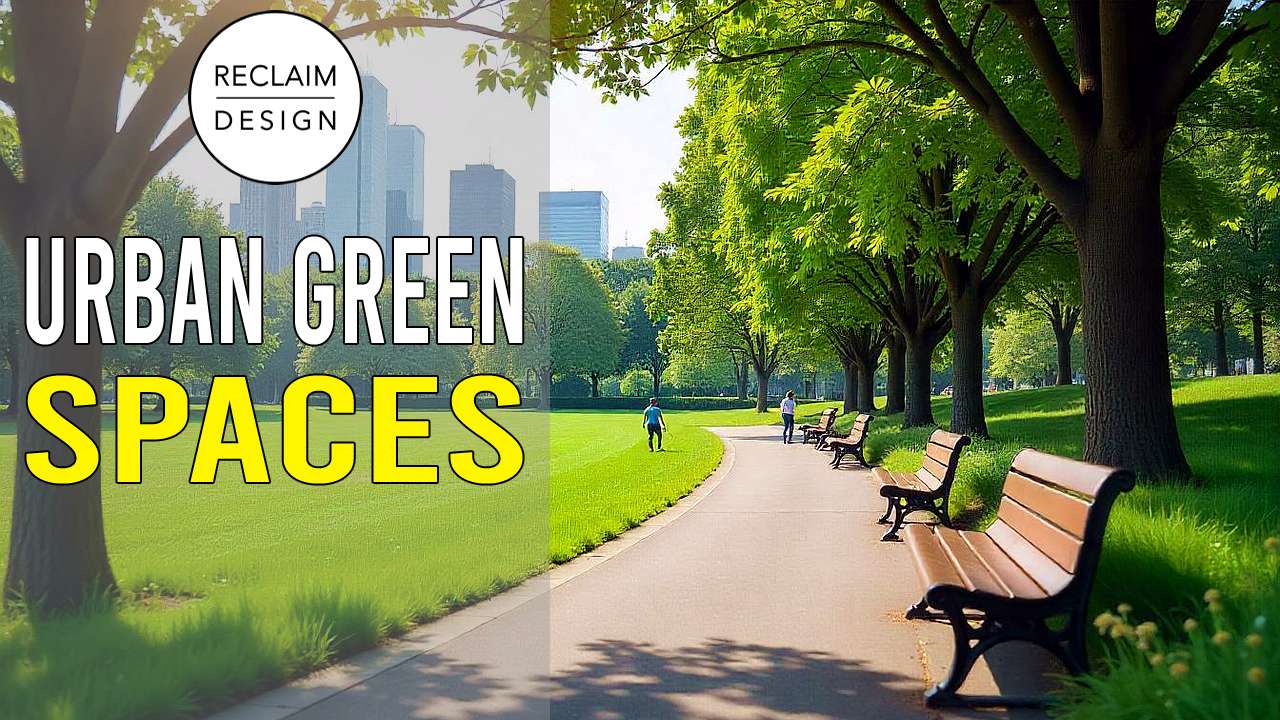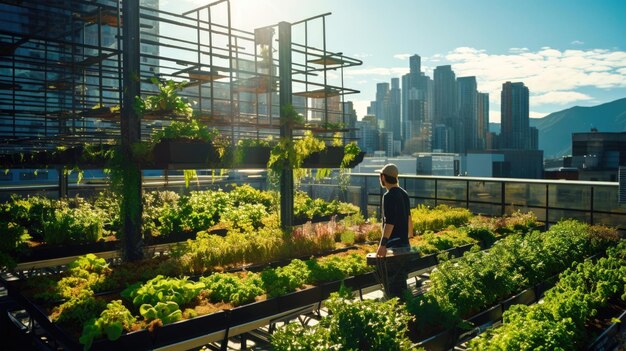
The world is changing, and not always for the better. Climate change, pollution, and resource depletion are pressing issues that demand immediate attention. But amidst these challenges lies an opportunity: the chance to reshape our communities, our cities, and our planet for a more sustainable future. This is where sustainable green infrastructure development comes in. It’s more than just a buzzword; it’s a transformative approach that marries environmental stewardship with urban planning and community well-being. This comprehensive guide will delve deep into the world of green infrastructure, exploring its benefits, its implementation, and its vital role in creating a healthier, more resilient, and more vibrant world for generations to come.
Understanding the Fundamentals of Sustainable Green Infrastructure
Before we dive into the specifics, let’s establish a clear understanding of what sustainable green infrastructure development truly entails. Essentially, it’s a strategic approach to designing, constructing, and managing built environments that incorporate natural elements to provide a wide range of ecological, economic, and social benefits. Unlike conventional infrastructure, which often focuses solely on functionality and cost-effectiveness, green infrastructure prioritizes the integration of natural systems to enhance the overall quality of life and mitigate the negative impacts of urbanization.
Think of it this way: instead of building a concrete jungle, we’re weaving a tapestry of green spaces, natural features, and eco-friendly technologies into the fabric of our communities. This includes everything from parks and green roofs to permeable pavements and constructed wetlands. The goal is to create a more harmonious relationship between humans and nature, where both can thrive.
Key Components of Green Infrastructure
To truly grasp the concept, it’s helpful to break down the key components that make up green infrastructure:
- Green Spaces: This encompasses parks, gardens, urban forests, and other areas dedicated to vegetation. These spaces provide recreational opportunities, improve air quality, and enhance biodiversity.
- Green Roofs and Walls: These are vegetated surfaces that are installed on rooftops and building walls. They help to reduce stormwater runoff, regulate building temperatures, and provide habitat for wildlife.
- Permeable Pavements: Unlike traditional asphalt and concrete, permeable pavements allow rainwater to seep into the ground, reducing runoff and replenishing groundwater supplies.
- Constructed Wetlands: These are artificial wetlands designed to treat wastewater, filter pollutants, and provide habitat for aquatic species.
- Urban Trees: Trees play a vital role in green infrastructure, providing shade, reducing the urban heat island effect, absorbing pollutants, and enhancing the aesthetic appeal of urban areas.
- Bioretention Systems: These are landscape features that capture and filter stormwater runoff, removing pollutants and allowing water to infiltrate into the ground.
The Multifaceted Benefits of Sustainable Green Infrastructure
The advantages of embracing sustainable green infrastructure are far-reaching and touch upon various aspects of our lives. It’s not just about protecting the environment; it’s about creating healthier, more resilient, and more economically vibrant communities. Let’s explore some of the key benefits:
Environmental Benefits
The environmental advantages of green infrastructure are perhaps the most readily apparent. By integrating natural systems into the built environment, we can:
- Improve Air Quality: Green infrastructure, particularly urban forests and green walls, helps to filter pollutants from the air, reducing the incidence of respiratory illnesses and improving overall public health.
- Reduce Stormwater Runoff: Permeable pavements, green roofs, and bioretention systems help to manage stormwater runoff, reducing the risk of flooding and erosion, and preventing pollution from entering waterways.
- Enhance Biodiversity: Green spaces and green roofs provide habitat for wildlife, supporting biodiversity and creating more resilient ecosystems.
- Mitigate the Urban Heat Island Effect: Urban areas tend to be significantly warmer than surrounding rural areas due to the absorption of heat by concrete and asphalt. Green infrastructure, such as trees and green roofs, helps to cool urban areas, reducing energy consumption and improving comfort.
- Conserve Water Resources: By reducing stormwater runoff and promoting groundwater recharge, green infrastructure helps to conserve water resources and reduce the strain on water treatment facilities.
Economic Benefits
Investing in green infrastructure can also yield significant economic benefits, including:
- Increased Property Values: Studies have shown that properties located near green spaces tend to have higher values than those without such amenities.
- Reduced Energy Costs: Green roofs and green walls can help to insulate buildings, reducing energy consumption for heating and cooling.
- Job Creation: The development and maintenance of green infrastructure projects create jobs in various sectors, including landscape architecture, construction, and maintenance.
- Reduced Healthcare Costs: By improving air quality and reducing stress levels, green infrastructure can contribute to lower healthcare costs.
- Increased Tourism and Recreation Revenue: Parks, greenways, and other green spaces attract tourists and provide recreational opportunities, boosting local economies.
Social Benefits
The social benefits of green infrastructure are often overlooked, but they are crucial to building thriving communities:
- Improved Public Health: Access to green spaces has been linked to improved physical and mental health, reducing stress levels and promoting a sense of well-being.
- Increased Social Cohesion: Parks and other green spaces provide opportunities for social interaction and community building, fostering a sense of belonging.
- Enhanced Aesthetic Appeal: Green infrastructure enhances the aesthetic appeal of urban areas, making them more attractive and livable.
- Educational Opportunities: Green spaces can serve as outdoor classrooms, providing opportunities for environmental education and fostering a greater appreciation for nature.
- Increased Resilience to Climate Change: Green infrastructure can help communities adapt to the impacts of climate change, such as flooding, heat waves, and drought.
Implementing Sustainable Green Infrastructure: A Practical Guide
The transition to sustainable green infrastructure is a journey, not a destination. It requires careful planning, collaboration, and a commitment to long-term sustainability. Here’s a step-by-step guide to help you get started:
1. Conduct a Needs Assessment
Before embarking on any green infrastructure project, it’s crucial to conduct a thorough needs assessment. This involves identifying the specific environmental, economic, and social challenges facing your community and determining which green infrastructure solutions are most appropriate. Consider factors such as:
- Local Climate and Topography: Different climates and topographies will require different types of green infrastructure.
- Existing Infrastructure: Assess the existing infrastructure and identify opportunities to integrate green elements.
- Community Needs and Priorities: Engage with community members to understand their needs and preferences.
- Available Resources: Determine the available funding, land, and expertise.
2. Develop a Comprehensive Plan
Based on the needs assessment, develop a comprehensive green infrastructure plan. This plan should include:
- Goals and Objectives: Define the specific goals and objectives of the green infrastructure project.
- Project Selection: Identify the specific green infrastructure projects to be implemented.
- Site Selection: Determine the appropriate locations for each project.
- Design and Engineering: Develop detailed designs and engineering plans for each project.
- Implementation Strategy: Outline the steps required to implement the plan, including timelines, budgets, and responsibilities.
- Monitoring and Evaluation: Establish a system for monitoring and evaluating the performance of the green infrastructure projects.
3. Secure Funding and Partnerships
Funding is essential for implementing green infrastructure projects. Explore various funding sources, including:
- Government Grants: Many local, state, and federal government agencies offer grants for green infrastructure projects.
- Private Funding: Seek out private investors and foundations that are interested in supporting sustainable development.
- Public-Private Partnerships: Collaborate with private companies to develop and implement green infrastructure projects.
- Community Fundraising: Engage with community members to raise funds for local projects.
Building strong partnerships is also crucial. Collaborate with local government agencies, community organizations, businesses, and other stakeholders to ensure the success of your projects.
4. Design and Construction
When designing and constructing green infrastructure projects, consider the following:
- Use Sustainable Materials: Choose materials that are environmentally friendly, durable, and locally sourced whenever possible.
- Incorporate Green Building Principles: Follow green building principles to minimize environmental impacts and maximize energy efficiency.
- Engage Qualified Professionals: Hire experienced landscape architects, engineers, and contractors who have expertise in green infrastructure design and construction.
- Prioritize Community Involvement: Involve community members in the design and construction process to ensure that the projects meet their needs and preferences.
5. Maintenance and Management
Proper maintenance and management are essential for the long-term success of green infrastructure projects. Develop a comprehensive maintenance plan that includes:
- Regular Inspections: Conduct regular inspections to identify any problems or maintenance needs.
- Routine Maintenance: Perform routine maintenance tasks, such as mowing, weeding, and pruning.
- Watering and Irrigation: Ensure that plants receive adequate water, especially during dry periods.
- Fertilization and Pest Control: Use organic fertilizers and pest control methods to minimize environmental impacts.
- Monitoring and Evaluation: Monitor the performance of the projects and make adjustments as needed.
Examples of Successful Green Infrastructure Projects
Across the globe, communities are embracing green infrastructure to create more sustainable and livable environments. Here are a few inspiring examples:
1. The High Line, New York City, USA
This elevated park, built on a former railway line, is a prime example of adaptive reuse and green infrastructure. It provides a green oasis in the heart of Manhattan, offering recreational opportunities, improving air quality, and enhancing the aesthetic appeal of the city.
2. Curitiba, Brazil
Curitiba is renowned for its innovative urban planning, including its extensive network of parks and green spaces, bus rapid transit system, and waste recycling programs. The city’s commitment to green infrastructure has transformed it into a model of sustainable urban development.
3. Vancouver, Canada
Vancouver has implemented a comprehensive green infrastructure strategy, including green roofs, permeable pavements, and urban forests. The city is committed to becoming the greenest city in the world and is making significant progress towards its goals.
4. Singapore
Singapore has embraced green infrastructure as a key component of its urban development strategy. The city-state has implemented a wide range of green initiatives, including green roofs, vertical gardens, and extensive park systems, creating a lush and vibrant urban environment.
5. Freiburg, Germany
Freiburg is a leader in sustainable urban development, with a strong emphasis on green infrastructure, renewable energy, and community engagement. The city’s Vauban district, a car-free neighborhood with green roofs and shared green spaces, is a prime example of sustainable urban living.
Challenges and Considerations
While the benefits of sustainable green infrastructure are undeniable, there are also challenges and considerations that must be addressed:
- Cost: The initial costs of implementing green infrastructure projects can sometimes be higher than conventional infrastructure projects. However, the long-term benefits, such as reduced energy costs and improved public health, often outweigh the initial investment.
- Maintenance: Green infrastructure projects require ongoing maintenance to ensure their long-term performance. This can require specialized expertise and dedicated resources.
- Public Awareness and Education: Educating the public about the benefits of green infrastructure is essential for gaining support and ensuring the success of projects.
- Policy and Regulations: Supportive policies and regulations are needed to promote the adoption of green infrastructure.
- Coordination and Collaboration: Effective coordination and collaboration among various stakeholders are essential for planning, designing, and implementing green infrastructure projects.
- Climate Change Impacts: Climate change can pose challenges to green infrastructure, such as increased flooding and drought. It is important to design green infrastructure that is resilient to climate change impacts.
The Future of Sustainable Green Infrastructure
The future of sustainable green infrastructure is bright. As the world becomes increasingly aware of the importance of environmental sustainability and the need to create more livable communities, the demand for green infrastructure will continue to grow. Technological advancements, such as smart sensors and data analytics, will further enhance the efficiency and effectiveness of green infrastructure projects.
We can anticipate the following trends:
- Increased Integration of Green Infrastructure: Green infrastructure will become increasingly integrated into all aspects of urban planning and development.
- Smart Green Infrastructure: The use of smart technologies will become more prevalent, allowing for real-time monitoring, management, and optimization of green infrastructure systems.
- Nature-Based Solutions: There will be a growing emphasis on nature-based solutions, which use natural processes to address environmental challenges.
- Community Engagement: Community engagement will become increasingly important, as communities play a vital role in the planning, design, and maintenance of green infrastructure projects.
- Resilient Infrastructure: Green infrastructure will be designed to be more resilient to the impacts of climate change.
By embracing sustainable green infrastructure, we can build a better tomorrow. We can create communities that are not only environmentally sustainable but also economically vibrant and socially equitable. It’s a journey that requires vision, innovation, and a commitment to collaboration. But the rewards – a healthier planet, thriving communities, and a brighter future – are well worth the effort.
Conclusion: Embracing a Greener Tomorrow
Sustainable green infrastructure is more than just a trend; it’s a necessity. As we confront the challenges of climate change, urbanization, and resource depletion, green infrastructure offers a powerful solution. It’s a pathway to creating communities that are in harmony with nature, offering a wealth of benefits for both people and the planet. By understanding the principles, embracing the benefits, and taking the necessary steps to implement green infrastructure, we can pave the way for a more sustainable and resilient future. Let’s work together to build a world where green spaces flourish, ecosystems thrive, and communities prosper. The time to act is now. Let’s build a greener tomorrow, together.



